

Behind
‘the wall ’ ,
people achieve the American Dream
MEXICAN CULTURE, ECONOMICS, HISTORY, AND LANGUAGE THRIVE ON BOTH SIDES OF THE BORDER



among writers, musicians, and artists as a representative of Grupo Prisa.
A living geopolitical wound defines Tijuana, and living in a permanent fissure generates the conditions for creativity.
When art transgresses the limits of its form, it moves forward across borders and generations
When art transgresses the limits of its form, it moves forward across borders and generations.
Mexico’s cultural centralism, which characterized the country before the digital age, always despised the border for its lack of purity. According to conservative philosopher José Vasconcelos, northern cultural expressions were attempts to replace Latin-Spanish culture with primitive Americanism.
Art, literature, and music outside of Mexico City had transgressed genres, formats, themes, and language for decades, threatening the political and market interests of the cultural establishment.
It was a neocolonial process that positioned Tijuana as a cultural hub, a cosmopolitan reference for contemporary art, music, and literature through InSite (1992-2005), Tijuana: Third Nation exhibitions at ARCO Madrid (2004-2005), and Strange New World: Art and Design from Tijuana at the San Diego Museum of Contemporary Art (2006-2007). As a result, the transgressive nature of local cultural expression was domesticated.
In the mid-2000s, Spanish lobbyist Antonio Navalón developed the Third Nation concept when Tijuana had already gained popularity as an academic and artistic destination.
In Spain, Navalón was involved in banking and tax scandals.
His exile in Mexico nonetheless made him a cultural Midas
Mexico’s cultural centralism (before the digital age) always despised the border for its lack of purity
LA CASA DEL TÚNEL
(CALLE CHAPO
MÁRQUEZ 133, ZIP CODE 22010)
HTTPS://WWW. FACEBOOK.COM/ CASADELTUNEL/
Conquest of Tijuana THE OTHER
PASAJE RODRÍGUEZ Y PASAJE REVOLUCIÓN (ZONA CENTRO, ZIP CODE 22000)
HTTPS://WWW. FACEBOOK.COM/ PASAJERO DRIGUEZTIJUANA/
FACEBOOK.COM/ PASAJEREVOLUCION/
CAJA GALERÍA (CALLE DE LAS MORAS 118-B, ZIP CODE 22100)
It was a neocolonial process that positioned Tijuana as a cultural hub, a cosmopolitan reference for contemporary art…
The concept of the Third Nation was imposed and profited from by Navalón, who traveled to the border and appropriated its imagery.
Although local artists benefited from promoting their work on the Navalón platform, transnational corporations were the biggest beneficiaries.
InSite and Strange New World, as well as Third Nation, were cultural diplomacy initiatives that encouraged foreign investment in Tijuana.
The working conditions of a large portion of Tijuana residents, particularly in the maquiladora industry, worsened and degraded behind the cheery and trivial acclaim of local artistic expressions.
Businessmen and artists who endorsed Tijuana’s art, literature, and music promoted an idea that combines the two concepts that are furthest from the transgressive nature of art: nationalism and third-worldism.
By being ‘third-nationalized,’ Tijuana became neoliberalized.
Tijuana, what is the result of a “cultural hybridization" at the border?
To the question, “What is the essence of Tijuana?” AI explains that the city has a certain socioeconomic complexity, along with challenges that shape its identity. An emotional ecosystem and images that drive its perennial transformation are not included in its definition.
This versatility was symbolized by the now-gone Iguanas: the balancing act of old and new, exotic and nascent, what threatens and what grows.
The results of “cultural hybridization” at the border, which failed to predict the escalation of violence, the proliferation of organized crime, and the increases in homicide rates between 2008 and now, led Néstor Garca Canclini to withdraw his opinion about the city.
“I have followed its process of decomposition and transformation through newspapers, academic articles, and stories from friends,” he acknowledged in a conversation with anthropologist Fiamma Montezemolo.
“I would say that for me, Tijuana is no longer, as I wrote in Hybrid Cultures, a ‘laboratory of postmodernity,’ but perhaps a laboratory of the social and political disintegration of Mexico as a result of cultivated ungovernability.”
We must also include the narrative constructed from academic cubicles, museums, and corporate offices
GOB.MX/
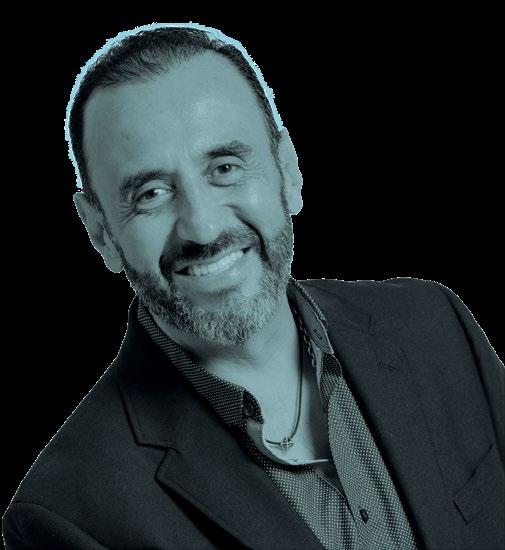

“WE ARE HERE TO LISTEN, HELP, AND IMPROVE. THE CONSULATE IS YOUR HOME.”
INTERVIEW WITH CONSUL PATRICIA CORTÉS
Behind all the lights, the blaring noises, and the slot machines running at full throttle, amidst the desert and vast skies, the city of Las Vegas rises. It becomes clear that it is the hands of Mexican men and women that have built and sustained it.

In an exclusive interview for Heraldo USA, Consul Patricia Cortés welcomed us with kindness, a big smile, and wearing a beautiful Oaxacan huipil.
Discovering Las Vegas through the eyes of Consul Patricia Cortés, who has been leading the General Consulate of Mexico here for several months and boasts an extensive career in the Mexican Foreign Service, offers insight into some important figures and the relevance of the Mexican community in the state of Nevada. Here, almost 1 million people are of Mexican descent, including approximately 220,000 born in Mexico. The consulate’s jurisdiction and responsibilities extend across all counties in the state.
Like in all Mexican representations abroad, the documentation department is the most active at this consulate. Every day, around 160 people come in for passport appointments, consular IDs, voter ID requests from the National Electoral Institute of Mexico (INE), birth certificates, and more. The issuing of passports and consular IDs is particularly frequent. Due to high demand, an additional window was opened, increasing appointment capacity by about 20%. Elderly individuals can attend without an appointment, as well as those in an emergency.
PATRICIA CORTÉS
We want them to feel safe at the consulate, to come, and trust us; if they need our help, we won’t ask about their immigration status. We can help them with whatever they need.’
The community realizes how important it is to vote, they need to make their voices heard, and on the other hand be aware of the relevance of the Hispanic vote.

We are pleased and proud to see how women are the driving force of the economy, lifting not only the well-being of their families but also their communities.
the people clearly: “The community is very brave and very generous.” This is reflected in a significant portion of the Mexican American population being part of many organizations contributing to society, both as leaders and volunteers. All of this has enabled the formation of a support network for the Mexican community. Partnerships have been established with other organizations and individuals to assist in immigration matters, administrative law, criminal law, and other legal needs. The Legal Assistance Program (PALE) includes Hispanic lawyers who offer their professional services to those in need. However, she acknowledges that most of their work is done with aspects of building community. As such, the consular work goes beyond providing documentation services, supporting the professional and personal development of Mexican nationals and people of Mexican descent.
Consul Patricia recognizes there is a challenge is ensuring people know about all the support, resources, and programs the consulate offers, making diffusion, both in Spanish and English, crucial so that people are better informed and able to access them.
Cortés also acknowledges that there is a relationship of trust with the local authorities and the police, who are not looking to go after people in relation with their immigration status. This has allowed those who come to the consulate to feel safe, while simultaneously being informed about their rights. Unfortunately, as in other places, there are serious problems to attend to, such as cases of domestic violence, primarily involving female victims. They have also partnered with special organizations that can provide support on these issues.
Political participation within the community has increased, says Patricia. The consulate, in coordination with the INE, facilitated the credentialing process so that people had the documentation required to vote in the recent Mexican electoral process.
“I am very proud when people come up to me and say how great it is to have a woman president, and I am equally pleased that there is also a female consul,” she comments with a big smile.
The involvement of the Mexican community also extends to United States politics, as there are already female Mexican community leaders in office, such as Councilwoman Olivia Díaz at Las Vegas City Hall.
“The community is very proud of that, and this state is unique in that regard,” the consul shares with us.
Additionally, the American population is increasingly recognizing the value and importance of the Latino vote in the United States. In Nevada in particular, considered a swing state, where presidential election results can be determined, it is essential for the community to stay informed and carefully consider whom they will vote for. The consulate is also a place where meetings with allies are organized “so that those who can vote, do vote,” she emphasizes. Consul Patricia Cortés underscores that the doors of the consulate are open to all Mexicans.
In addition to the areas of documentation, protection, community services, and entrepreneurship, the consulate also serves as a hub for cultural activities and celebrations. For example, gastronomic events where the community can connect with its roots and anyone interested can learn about Mexican cuisine, which is catalogued as Intangible Cultural Heritage of Humanity. As you are walking down The Strip, surrounded by live Sinaloan banda music, or enjoying a meal at a restaurant in a different part of town, the city’s Mexican heritage and cultural identity become evident. This Mexican American community is
she was appointed Consul of Mexico in Las Vegas.



Twelve years after her retirement, the fire still burns in Laura Serrano, and her eyes light up when she talks about boxing, a sport that changed her life forever.
Laura Serrano entered the sport to change the long-standing trajectory of boxing and is at peace with the role she played—that of a pioneer. With her bare fists, she paved the way for women’s boxing to become one of the cornerstones of Mexican sports.
“My time as a boxer was very difficult, it was a turning point, a struggle, and how beautiful that is because it’s a great satisfaction when you’re building something. There were tears, fights, but we succeeded,” said the woman who broke down stereotypes and became the first Mexican woman to hold a professional boxing license after five decades of prohibition, in an interview with Heraldo USA.
The shouts of fans eager to see “how the women hit each other” left a mark on her, but through hard work, courage, and determination, she showed that women were there for more than just money or fame.
Laura’s first encounter with boxing was in 1989 when she was a student at UNAM, looking for a physical activity to help her lose weight and stay in shape. On one of her gym visits, she came across a girl practicing boxing. Though she thought the girl was “crazy,” the sound of the speed bag, the coordination, and movements captivated her. It was love at first sight.
However, her journey into professional boxing was anything but easy. Taboo led her to hear warnings about how stepping into the ring and exchanging blows could leave her with “breast cancer or infertility,” but she saw these as mere excuses to protect a space considered exclusive to men—the most masculine of all sports.
She made her debut in 1994, in Las Vegas, on the undercard of the rematch between Julio César Chávez and American fighter Frankie Randall. But in true Laura fashion, she went big. Despite it being her first professional fight, she agreed to face Christy Martin, the legendary American pioneer with 23 professional fights under her belt.
With a borrowed uniform and a generic mouthguard, Laura stepped into the ring without fear and gave the so-called Coalminer’s Daughter one of the toughest battles of her career. That night, she left the ring at the MGM Grand Garden Arena not only with a draw but also with the respect of her opponent and all the fans present.
A PASSION
Without Limits
Boxing helped me become a better person, boxing helped me become a disciplined woman, boxing helped me develop a strong, tenacious character, and I think, for things like that alone, it was worth it.’
Five fights later, she won the World International Boxing Federation title in Tunica, Mississippi, defeating Tracy Byrd by unanimous decision, and she felt her life change forever. She only had one dream left to fulfill: to fight in front of her home crowd in Mexico. But soon, she would face reality. In 1947, the same year Mexican women were allowed to vote in municipal elections for the first time, a presidential decree issued by President Miguel Alemán prohibited women from training or participating in boxing events in Mexico City. However, 52 years later, with her gloves on, Laura arrived to break down any obstacle for herself and for the women who would follow. She fought legal battles, even filing appeals, until the decree, which contradicted the Constitution, became obsolete.
“It was a very tough battle, a fight that lasted about ten years, during which presidents of the Boxing and Wrestling Commission came and went, and they were all cut from the same cloth: ‘No to women’s boxing.’ It was a double fight, in and out of the ring, but it was totally worth it. For me, the fights were easy, but outside the ring, with men in suits, that was hard because you’re facing politicians, not just sports administrators,” she recalled. Now, more than a decade away from the ring and dedicated to her faith, Laura looks back and believes there’s only one reason she managed to carve out a space for women in the sport: her immense passion for boxing.
“Men come to boxing looking for big payouts or fame, but women don’t. Everything I experienced, from amateur to world champion, was the result of that love,” explained the fighter, who stepped into the ring 25 times, achieving 17 wins, 5 losses, and 3 draws.
She admitted that at first, she didn’t think about the women who would follow in her footsteps because she was so focused on her dream, but now, seeing the rise of Mexican women’s boxing—placing the country as the second-strongest in terms of the number and quality of female fighters—she feels immense pride, though she acknowledges there’s still progress to be made.
“I’m happy to see that women can now headline fight cards, that they earn decent wages, that they have strong roles and are thriving in their development. There’s been great progress, but in economic terms, not yet, though I trust we’ll get there,” she concluded.
BY ÉRIKA MONTOYA PHOTOART: ALEJANDRO OYERVIDES
A DIVIDED ELECTORATE characterizes these states.
IMMIGRATION remains the state's top concern.
SHARES a 600 km border with Mexico.
ECONOMY is also a key priority.
GOVERNOR is a Democrat.
REPUBLICANS hold an edge in the State Legislature.
ONE OF THE MOST coveted prizes for candidates.
LEANED DEMOCRATIC in 2020 by 11,000 votes.
THE NOVEMBER 5 PRESIDENTIAL ELECTION IS SHAPING UP TO BE ONE OF THE CLOSEST IN U.S. HISTORY, WITH REPUBLICAN DONALD TRUMP AND DEMOCRAT KAMALA HARRIS RUNNING NECK-AND-NECK IN SWING STATES TO BECOME THE NEXT OCCUPANT OF THE WHITE HOUSE.
ACCORDING TO THE WASHINGTON POST

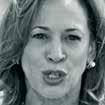

BECAME a battleground following Kamala Harris's candidacy.
THE ARAB AMERICAN AND MUSLIM-AMERICAN communities have over 300,000 members.
HARRIS'S STANCE on Israel and Gaza could impact her support. IT HAS 11 MILLION residents.
TRUMP emphasizes Michigan's importance on his path to victory. POLLS have tightened in this state.
ECONOMY, immigration, and abortion rights are crucial, similar to other Sun Belt regions. KEY State on immigration.
ECONOMY AND LATINO SUPPORT play a key role in voters' decisions.
SWING STATE VOTERS


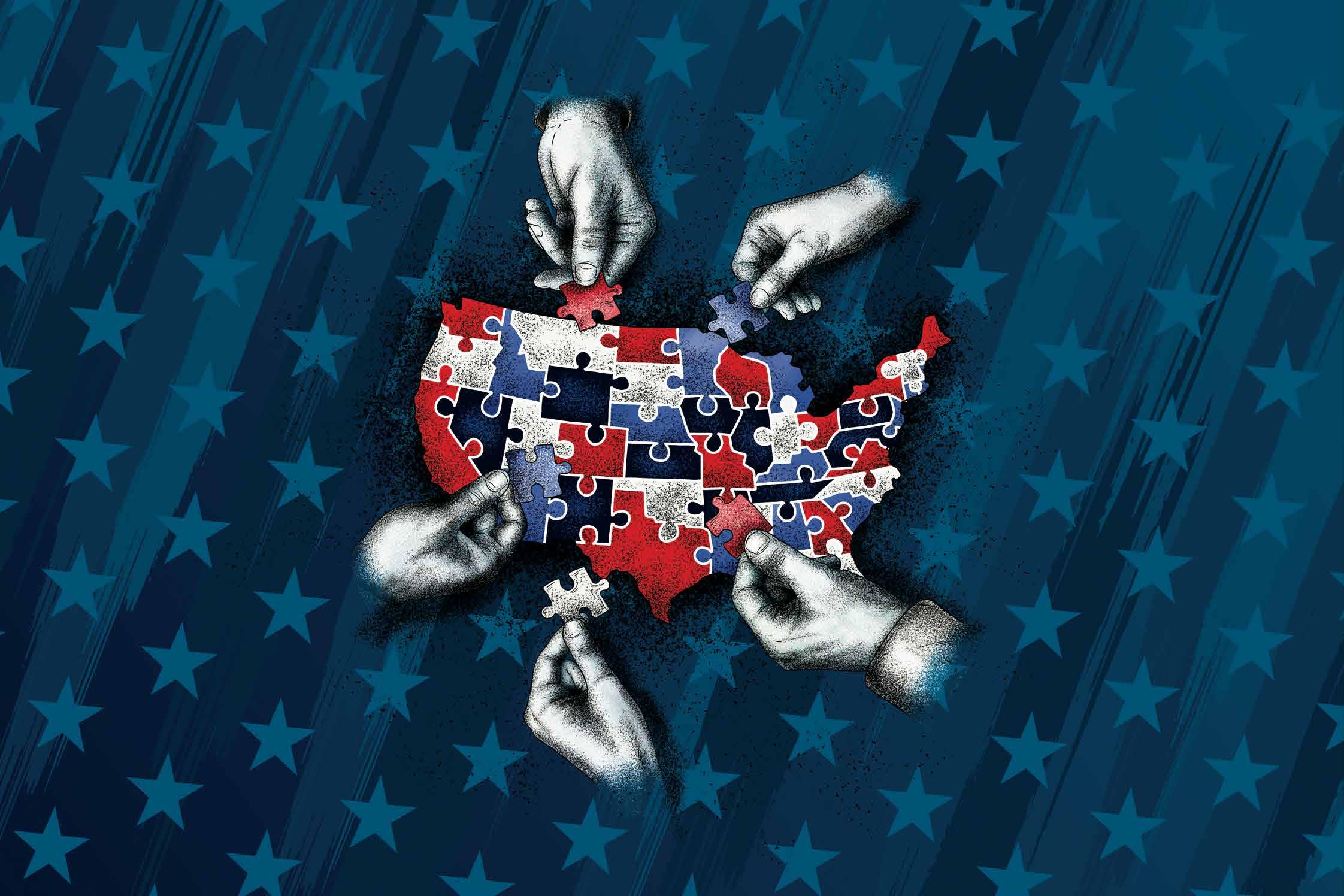
BY: ISRAEL LÓPEZ GUTIÉRREZ
PHOTO ART: IVÁN BARRERA


BY: ANGÉLICA SIMÓN UGALDE / PHOTOART: ARTURO RAMÍREZ
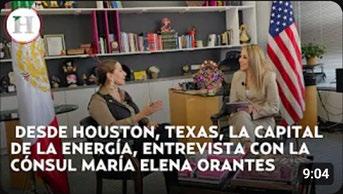


The


FROM HOUSTON, A MEXICAN OVERSEES ENERGY RESOURCE USE
to address common issues.
José Arturo Cerón Vargas is the compliance director for the international branch of the Federal Electricity Commission (CFE). He ensures that our country makes optimal use of the energy resources it obtains and exchanges with the United States.
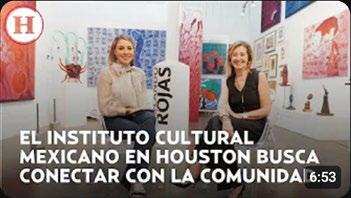
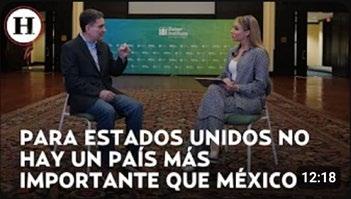
PROMOTING OAXACAN ART DESPITE CHALLENGES, MEXICO IS THE MOST IMPORTANT COUNTRY Valentina Atkinson, director of the Mexican Institute of Culture and Tourism in Houston, showcases and promotes the talent of various Mexican artists in the United States, noting that Oaxacan art has a special appeal for the American community.
For Tony Payan, director of the Center for the U.S. and Mexico at Rice University, Mexico has a clear and direct impact on the


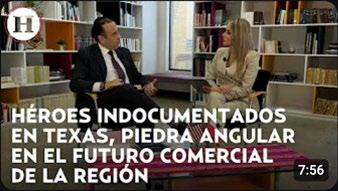

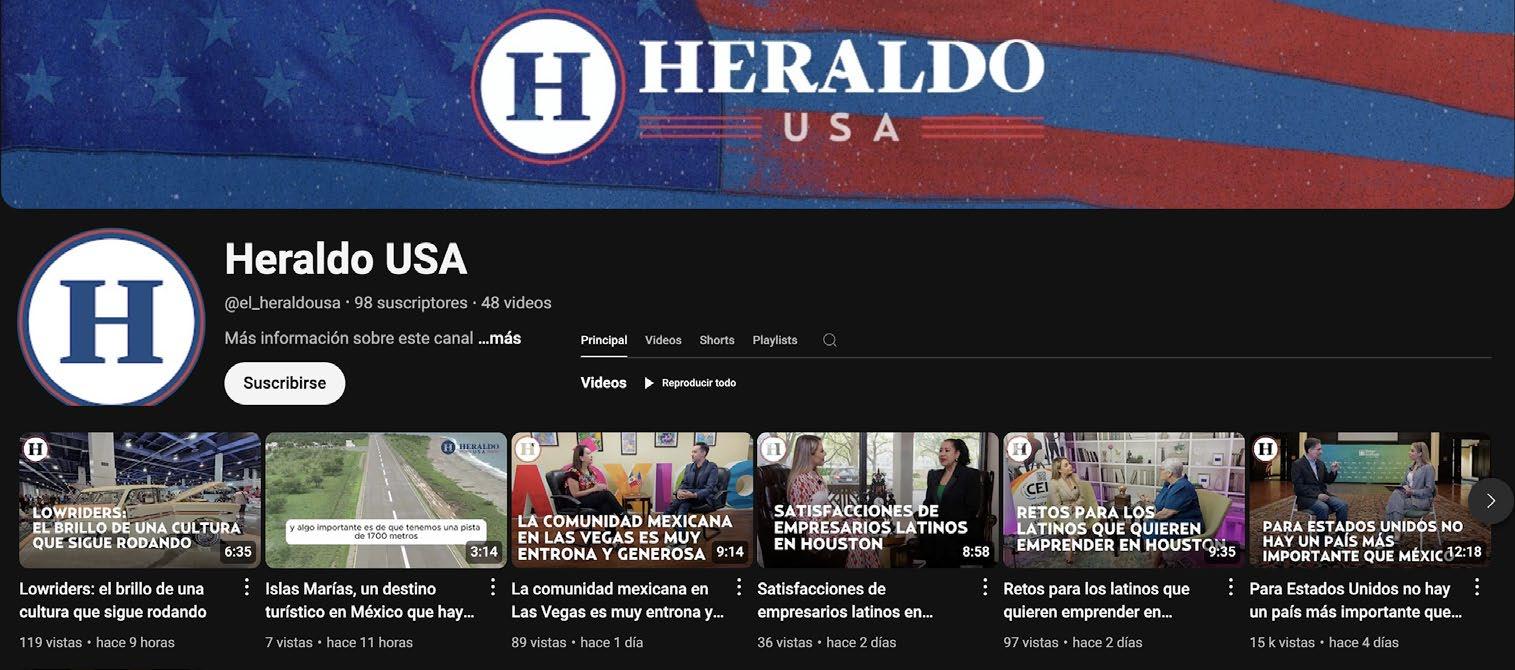



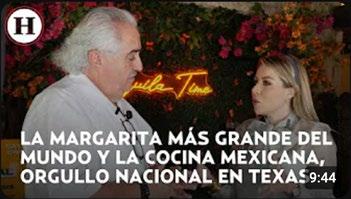

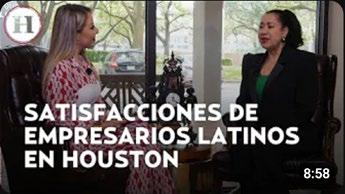
ELIA: A PILLAR FOR THE LGBTQ+ AND HIV COMMUNITY IN HOUSTON PICOS, "THE"

